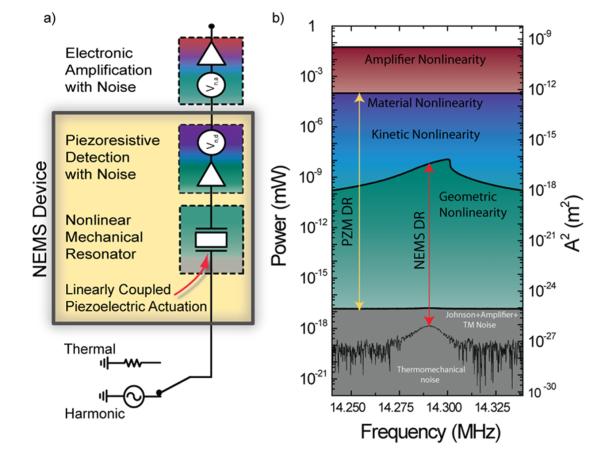Figure 1.
(a) Schematic of measurement design and protocol. When the switch is set to “Thermal”, the device is passively excited by thermal fluctuations. The resulting mechanical motion is transduced into electronic signals via the piezoresistive detector, which can be amplified through use of an external electronic amplifier. Other sources of noise from the detection and amplification exist. Setting the switch to “Harmonic” actively excites the device enabling interrogation of nonlinear response. (b) Illustration of relevant system dynamic ranges. The thermomechanical noise (bottom of red arrow) is extracted from the total noise spectrum (bottom of yellow arrow) and used to calibrate the right-hand vertical axis within the dynamic range (DR) of the metallic piezoresistor (PZM). The upper limit of the DR of the NEMS device is defined by the nonlinear critical amplitude and clearly resides within PZM DR. This enables measurement of the nonlinear properties of the device.

